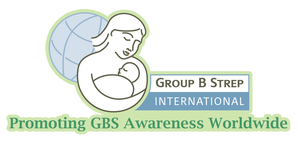Presented by Joy Bryant, RN-C, BSN, MSN, EdD Accompanying Handout: Measurable Learning Objectives: At the conclusion of this presentation, participants should be able to… 1. Understand how to perform (or educate patients) two different methods of monitoring fetal movement 2. Know what to do (or educate patients) if they notice a decrease in fetal movement ABOUT THE PRESENTER:  Joy Bryant, RN-C, BSN, MSN, EdD Dr. Joy Bryant has taught Obstetric nursing at Morgan community college for 15 years, she previously taught for the University of West Virginia. Joy has worked as an obstetric nurse on the labor, postpartum and well infant nursery. She has a BSN as well as a Master’s degree in nursing and a doctorate in education. She is also a certified lactation consultant.
Joy Bryant
10/17/2018 07:27:40 am
I hope you enjoyed the powerpoint and can use some of the information.
Marti Perhach
10/17/2018 12:38:06 pm
Thank you, Dr. Bryant, for your excellent presentation. Such important information for all pregnant women and their health care providers!
Amy Megan
10/17/2018 01:27:21 pm
I was wondering what I should consider a "kick." Should it only be counted if it is a physical kick, or can a flutter, my baby turning, or any movement also be counted?
Joy Bryant
10/17/2018 03:05:18 pm
Yes, I would say any fetal movement is called a kick. Differences at different times of the day our normal for babies. Just as they will be more active and sleep more at certain times of day when they are born. Mostly, try to get a feel for what is normal in any given day and then if you were to have a day where it seem totally different, that would be a time to pay more attention. You might want to have an Ultrasound or have a non-stress test at the doctors office or hospital if you are noticing a big change. Enjoy your pregnancy!
Janie Hanson-Ernstrom, RN, CNM
10/17/2018 02:29:08 pm
Thank you Dr Joy! I had not heard of “mindfetalness” and plan to introduce it to the students at the Denver College of Nursing (DCN).
Belzile Nadine
10/20/2018 07:27:51 pm
Thank you, Dr Bryant. I agree with you that all pregnant women should be taught to pay attention to fetal movements. My daughter died from asphyxiation in the womb at 38 weeks of pregnancy from a GBS caused chorioamnionitis. I had felt a significant decrease in fetal movements for 5 days before she was pronounced dead, which would have been enough time to save her. But I did not know to ask for a non-stress test and my doctor didn't give me one. There is also the myth that babies are supposed to move less as the time of labor approaches, which is also something my doctor believed. Comments are closed.
|
Categories
All
|
Join the Campaign against GBS Disease in babies! |
CONNECT TO GBSI |

 RSS Feed
RSS Feed